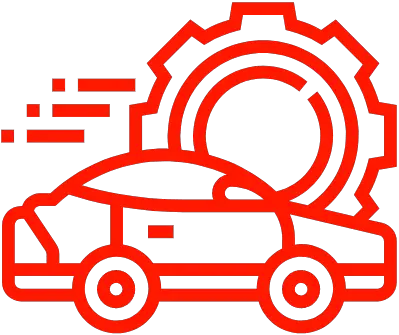Why You Shouldn’t Ignore the Brake System Warning Light in Your Honda Civic
The brake system warning light in a Honda Civic is a signal from the vehicle’s on-board computer that there may be an issue with the braking system. This light is usually accompanied by a message alerting the driver of the problem. The warning light may indicate low brake fluid, worn out brake pads, or an issue with one of the sensors in the braking system. If the warning light is illuminated, it is important to have the vehicle checked as soon as possible by a qualified mechanic to prevent further damage to the brakes. Ignoring this warning could lead to costly repairs and potentially dangerous driving situations.
Automobile: Troubleshooting a Brake System Warning Light in Honda Civic
Understanding the Basics
When a brake system warning light illuminates in your Honda Civic, it can be concerning. It’s important to understand the basics of what the warning light looks like, what different colors mean, and what causes it to illuminate. The warning light is typically a yellow or orange circle with an exclamation point inside. This indicates that there is a potential issue with your brakes that needs to be addressed.
Different colors of the warning light can indicate different levels of severity. A yellow or orange light is typically indicative of a low level issue that you should still address as soon as possible. Red lights are more serious and require immediate attention. The cause of the warning light being illuminated can be due to many different factors, such as low brake fluid levels, leaks or blockages, worn pads/rotors/calipers, or problems with the brake fluid pressure sensor.
Diagnosing the Problem
The first step in diagnosing any problem with your brakes is to check for leaks or blockages that could be causing issues with your system. If you notice any signs of leaking brake fluid, ensure that you replace it immediately and check for any signs of blockages in your brake lines. You should also inspect your master cylinder and brake lines to make sure they are functioning properly and that there are no irregularities in their operation. Finally, you will need to test the brake fluid pressure sensor to make sure it is delivering accurate readings and not causing any issues with your brakes.
Fixing the Problem
Once you have diagnosed any potential issues that could be causing your brake system warning light to illuminate, it’s time to start fixing them. This could mean replacing or cleaning components as needed, adding or replacing fluid if necessary, and adjusting sensors or calipers as needed. Depending on the severity of the issue and how long it has been since your last service appointment, these repairs may range from simple maintenance tasks all the way up to major component replacements – so always consult an experienced mechanic if you’re unsure about anything related to repairing your vehicle’s brakes!
Common Issues Related To a Brake System Warning Light in Honda Civic
Low fluid level/leaks/blockages are one of the most common issues associated with a brake system warning light in Honda Civic vehicles. In order to identify these problems and resolve them quickly and efficiently, make sure you regularly inspect all components related to your brakes and top up fluids as needed according to manufacturer specifications. Additionally, worn pads/rotors/calipers can cause similar issues – so always inspect these components during service appointments or when experiencing any braking problems so they can be replaced if necessary!
Brake System Warning Light Honda Civic
A brake system warning light in a Honda Civic is a sign that something is not right with the braking system. The light may be yellow or red, depending on the severity of the issue. It can indicate a problem with the brake fluid, brake pads, rotors, calipers, or other components. It is important to address any issues as soon as possible to ensure that your vehicle’s brakes are functioning properly and safely.
Reasons for Brake System Warning Lights
There are several potential causes for a brake system warning light in a Honda Civic. Low brake fluid is one of the most common culprits. This can happen when there is a leak in the brake lines or when too much fluid has been lost due to wear and tear on the brakes. Other potential causes include worn out brake pads or rotors, which can lead to decreased stopping power and increased wear on other components of the braking system. In addition, sensors or calipers may malfunction and cause the warning light to come on.
Testing and Repair Work
It is important to test and repair any issues with the braking system as soon as possible after noticing a warning light. This may involve testing various components of the braking system such as calipers and rotors, adjusting settings such as fluid levels, or replacing parts if necessary. It is also beneficial to have an experienced mechanic look at your car if you are unsure about any part of the repair process.
Benefits of Maintaining a Functional Brake System in Honda Civic
Maintaining a functional brake system in your Honda Civic has many benefits including improved safety features due to increased stopping power, reduced risk of accidents resulting from poor brakes, and less wear on other vehicle components since they do not have to work harder than necessary when braking occurs. Additionally, having properly functioning brakes makes it easier to control your car’s speed since you will be able to come to a complete stop more quickly and easily than if your brakes were not working properly.
Common Tools Used for Repair Work on a Honda Civic’s Brake System
When it comes time for repair work on your Honda Civic’s brake system, it is important to make sure you have all of the necessary tools available so that you can complete the job efficiently and effectively without any issues arising during or after completion of repairs. Common tools used for this type of work include socket wrench sets with various sizes for tightening and loosening nuts and bolts; screwdrivers such as slotted Phillips Torx hex bits; pliers like combination pliers; and specialized tools like torque wrenches that measure how much force has been applied while tightening nuts and bolts.
FAQ & Answers
Q: What Does a Brake System Warning Light Look Like in a Honda Civic?
A: The brake system warning light in a Honda Civic looks like an exclamation mark inside of a circle. It is usually orange or yellow in color and typically found on the dashboard near the speedometer.
Q: What Do the Different Colors Mean on the Brake System Warning Light?
A: The colors typically indicate different levels of severity. For example, yellow means that there is a minor issue and orange indicates a more serious problem. Red usually means that there is an immediate need to take action to prevent further damage.
Q: What Causes the Brake System Warning Light to Illuminate?
A: The brake system warning light can be triggered by various issues such as low fluid level, leaks, blockages, worn pads/rotors/calipers, or sensors/calipers malfunctioning.
Q: What Are Some Common Tools Used for Repair Work on a Honda Civic’s Brake System?
A: Common tools used for repair work on a Honda Civic’s brake system include socket wrench sets, screwdrivers, and pliers. These tools are used for tightening and loosening nuts and bolts as well as gripping objects tightly.
Q: What Are the Benefits of Maintaining a Functional Brake System in Honda Civic?
A: Benefits of maintaining a functional brake system in Honda Civic include improved safety features such as increased stopping power and reduced risk of accidents. Additionally, regular maintenance can reduce wear on other vehicle components.
In conclusion, the brake system warning light on a Honda Civic is an important part of the car’s safety system. It alerts the driver to potential problems with their brakes and allows them to take appropriate action to ensure their safety. The warning light also serves as a reminder to regularly maintain the brakes, so that they remain in good working order. Following these simple steps will help keep drivers safe and their cars running safely for years to come.
Author Profile

-
With more than 30 years in the bicycle industry, I have a strong background in bicycle retailing, sales, marketing and customer service. I have a passion for cycling and a dedication to excellence. As a manager, I worked diligently to increase my capabilities and responsibilities, managing up to eleven mechanics (at Palo Alto Bicycles) and later as a working partner in my own store.
As the shop owner of Spoke n’ Word Cycles in Socorro, NM, the success of the mission was my responsibility, which I pursued passionately since we opened in 2003 through the spring of 2011. I am adept at managing owned and loan inventory, preparing weekly & annual inventory statements, and managing staff. The role as managing partner also allowed me tremendous freedom. I used this personal freedom to become more deeply involved in my own advancement as a mechanic, to spearhead local trail building, and advocating for cycling both locally and regionally.
As a mechanic, I have several years doing neutral support, experience as a team mechanic, and experience supporting local rides, races, club events. I consistently strive to ensure that bicycles function flawlessly by foreseeing issues and working with the riders, soigners, coaches and other mechanics. Even with decades of experience as a shop mechanic and team mechanic, and continue to pursue greater involvement in this sport as a US Pro Mechanic, and UCI Pro Mechanic.
Latest entries
- July 26, 2023BodyFind the Best Grill for Your 2007 Toyota Tacoma – A Complete Guide
- July 26, 2023BodyUpgrade Your Ford Escape with the Best 2008 Grill – Here’s How!
- July 26, 2023Bumper Stickers, Decals And MagnetsBest Chevy 1500 Door Emblem: Upgrade Your Truck with a Stylish Emblem
- July 26, 2023Marker Light AssembliesGive Your 2008 Dodge Dakota a Makeover with the Best Grill Upgrade
